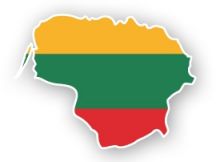About Lithuania
About Lithuania

Facts about Lithuania
Area: 65,300 sq. km.Population: 2,867,725 (year 2023 estimate)
Language: Official language– Lithuanian, which is the member of Baltic language group (other 2 members are Latvian, and dead Prussian language). It is the most archaic language from all the Indo-European languages.
Religion: Lithuania is considered to be very religious country. According to the data of the 2021 Statistical Survey, 80.2% of the Lithuania population attributed themselves to religious communities and associations. Roman Catholics accounted for 74.2% of the total population of the country.
Currency: On 1 January 2015, Lithuania adopted the Euro (€) (EUR) as the official currency and became the 19th member of the Eurozone.
Political system: Lithuania Republic is the parliamentary democracy. The head of state is The President. Executive authority is Prime minister and the cabinet, and the legislative power is in the hands of parliament.
Neighbors: Latvia, Belarus, Poland, and Russia.
Cities: The biggest cities in Lithuania:
- Vilnius – 581,475 pop. (year 2023 estimate)
- Kaunas – 319,790 pop. (year 2023 estimate)
- Klaipėda – 162,292 pop. (year 2023 estimate)
Lithuania is at a crossroad between west and east Europe, and throughout its complicated history has developed a unique culture, which encompasses both deep respect for traditions and robust wish to learn and innovate. We are members of EU and NATO, and are among the most bilingual and educated nations in Europe, however costs of living here are lower than in western countries, which makes Lithuania great for tourism, education or business.
Lithuanian people are simple, calm and can be somewhat shy with foreigners, but friendly and good-intended when you get to know them. We are keen to share our experience and the way of life with the rest of the world. If you plan to visit, you are certain to leave with dozens of new friends.